
Heinrich Rudolf Hertz was a German physicist who first conclusively proved the existence of the electromagnetic waves predicted by James Clerk Maxwell's equations of electromagnetism. The unit of frequency, cycle per second, was named the "hertz" in his honor.

Hermann Ludwig Ferdinand von Helmholtz was a German physicist and physician who made significant contributions in several scientific fields, particularly hydrodynamic stability. The Helmholtz Association, the largest German association of research institutions, is named in his honor.

Hermann von Siemens was a German industrialist of the Siemens family.
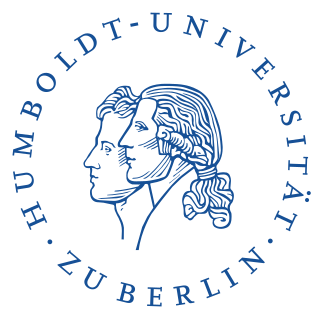
The Humboldt University of Berlin is a public research university in the central borough of Mitte in Berlin, Germany

The Physikalisch-Technische Bundesanstalt (PTB) is the national metrology institute of the Federal Republic of Germany, with scientific and technical service tasks. It is a higher federal authority and a public-law institution directly under federal government control, without legal capacity, under the auspices of the Federal Ministry for Economic Affairs and Energy.
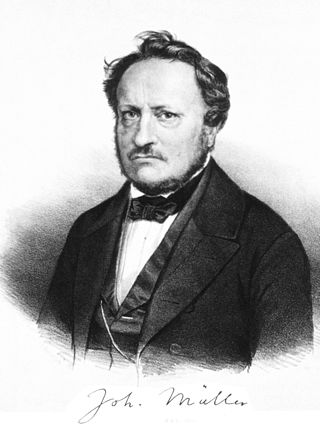
Johannes Peter Müller was a German physiologist, comparative anatomist, ichthyologist, and herpetologist, known not only for his discoveries but also for his ability to synthesize knowledge. The paramesonephric duct was named in his honor.
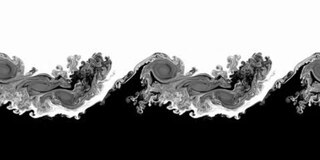
The Kelvin–Helmholtz instability is a fluid instability that occurs when there is velocity shear in a single continuous fluid or a velocity difference across the interface between two fluids. Kelvin-Helmholtz instabilities are visible in the atmospheres of planets and moons, such as in cloud formations on Earth or the Red Spot on Jupiter, and the atmospheres of the Sun and other stars.

The University of Königsberg was the university of Königsberg in East Prussia. It was founded in 1544 as the world's second Protestant academy by Duke Albert of Prussia, and was commonly known as the Albertina.
The Helmholtz Association of German Research Centres is the largest scientific organisation in Germany. It is a union of 18 scientific-technical and biological-medical research centers. The official mission of the Association is "solving the grand challenges of science, society and industry". Scientists at Helmholtz therefore focus research on complex systems which affect human life and the environment. The namesake of the association is the German physiologist and physicist Hermann von Helmholtz.

In late modern continental philosophy, neo-Kantianism was a revival of the 18th-century philosophy of Immanuel Kant. The Neo-Kantians sought to develop and clarify Kant's theories, particularly his concept of the Thing-in-itself and his moral philosophy.

Leo Königsberger was a German mathematician, and historian of science. He is best known for his three-volume biography of Hermann von Helmholtz, which remains the standard reference on the subject.
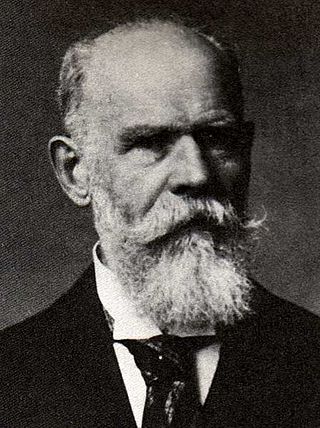
Arnold von Siemens was a German telecommunications industrialist of the Siemens family, one of the successors on his family's company Siemens.

Helmholtz pitch notation is a system for naming musical notes of the Western chromatic scale. Fully described and normalized by the German scientist Hermann von Helmholtz, it uses a combination of upper and lower case letters, and the sub- and super-prime symbols to denote each individual note of the scale. It is one of two formal systems for naming notes in a particular octave, the other being scientific pitch notation.
Richard Wilhelm Ferdinand von Helmholtz was a German engineer and designer of steam locomotives. Richard von Helmholtz was born on 28 September 1852 in Königsberg, Prussia, the son of the physicist Hermann von Helmholtz and his first wife Olga, née von Velten.

Marie ("Mimi") Baronessvon Schleinitz was an influential salonnière of the early German Reich in Berlin and one of the most important supporters of Richard Wagner.
Hermann Föttinger was a German engineer and inventor. In the course of his life he submitted over 100 patent applications, but he is most notable for inventing fluid coupling.

On the Sensations of Tone as a Physiological Basis for the Theory of Music, commonly referred to as Sensations of Tone, is a foundational work on music acoustics and the perception of sound by Hermann von Helmholtz.
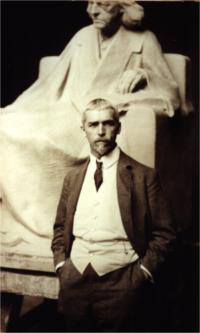
Adolf Brütt was a German sculptor. He was the founder of the Weimarer Bildhauerschule and its accompanying bronze foundry.

Anna von Helmholtz, was a German salonnière and writer who translated or edited the translations of a number of scientific works. She was the second wife of the physicist, Hermann von Helmholtz. Brought up in a circle in which intelligence and character were equally well developed, she was described as being talented and clever, with wide views and high aspirations.


















